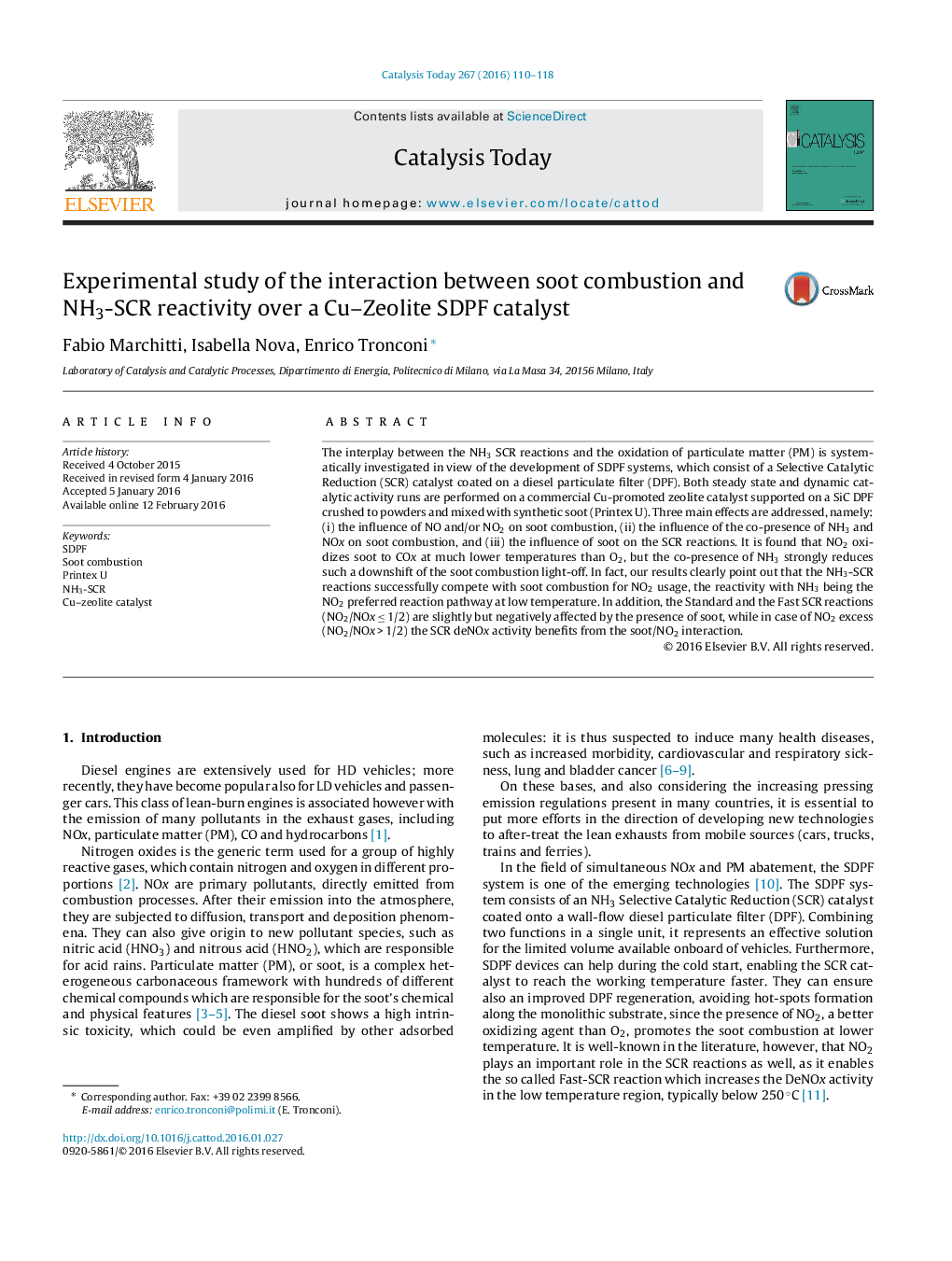| کد مقاله | کد نشریه | سال انتشار | مقاله انگلیسی | نسخه تمام متن |
|---|---|---|---|---|
| 53277 | 46961 | 2016 | 9 صفحه PDF | دانلود رایگان |

• Increasing concentrations of NO2 boost the low-T soot combustion.
• The SCR reactivity is the preferential reaction pathway for NO2 in presence of both soot and NH3.
• Soot slightly and negatively affects Standard and Fast SCR activities up to 300 °C.
• Soot enhances the NO2 SCR activity at low T and reduces the N2O formation.
The interplay between the NH3 SCR reactions and the oxidation of particulate matter (PM) is systematically investigated in view of the development of SDPF systems, which consist of a Selective Catalytic Reduction (SCR) catalyst coated on a diesel particulate filter (DPF). Both steady state and dynamic catalytic activity runs are performed on a commercial Cu-promoted zeolite catalyst supported on a SiC DPF crushed to powders and mixed with synthetic soot (Printex U). Three main effects are addressed, namely: (i) the influence of NO and/or NO2 on soot combustion, (ii) the influence of the co-presence of NH3 and NOx on soot combustion, and (iii) the influence of soot on the SCR reactions. It is found that NO2 oxidizes soot to COx at much lower temperatures than O2, but the co-presence of NH3 strongly reduces such a downshift of the soot combustion light-off. In fact, our results clearly point out that the NH3-SCR reactions successfully compete with soot combustion for NO2 usage, the reactivity with NH3 being the NO2 preferred reaction pathway at low temperature. In addition, the Standard and the Fast SCR reactions (NO2/NOx ≤ 1/2) are slightly but negatively affected by the presence of soot, while in case of NO2 excess (NO2/NOx > 1/2) the SCR deNOx activity benefits from the soot/NO2 interaction.
Figure optionsDownload high-quality image (141 K)Download as PowerPoint slide
Journal: Catalysis Today - Volume 267, 1 June 2016, Pages 110–118